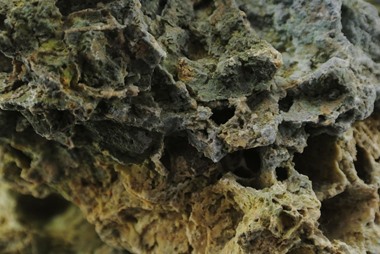Can we help you?
Contact us

Can we help you?
Contact us

Thank you for contacting us
Your form has been submitted successfully Our team will contact you again as soon as possible.
Whooppss...!! An error has occurred
Try sending later or write an email directly to areaempresas@ua.es

 PATENTED TECHNOLOGY
PATENTED TECHNOLOGY
INFO
SHEET
DOWNLOAD
EXECUTIVE
ABSTRACT
CONTACT DETAILS: Research Results Transfer Office-OTRI
University of Alicante
Tel.: +34 96 590 99 59
Email: areaempresas@ua.es
http://innoua.ua.es
Researchers of the University of Alicante have developed a novel device able to determine individual amounts of gases in a binary mixture which are being adsorbed simultaneously on a porous solid.
It is a practical and economical device that reduces drastically analysis time and it can be used in the following industrial sectors: environmental, energy, catalysis, gas storage, and so on. Both factors make its commercialization very easy. Researchers are looking for companies acquiring this technology for commercial purposes.

Gas adsorption on porous solids is a phenomenon with great industrial interest. It has application in different processes, such as:
• Gas separation.
• Pollutant removal from air.
• Purification of gas streams from industrial processes (SO2, CO, CO2, VOC, dioxins, HCl, NOx, etc.).
• Purification of natural gas (H2S).
• Recovery and concentration of fossil fuels.
• Others.
For all these applications, the use of a solid adsorbent with a determined porosity development is required for each specific gas mixture. In this sense, it is necessary to analyze several parameters which define the textural properties (specific surface area, specific volume, pore size distribution), in order to determine the applicability of these porous solids in the treatment of gas mixtures. For this purpose, different techniques are used, but among them, physical adsorption of gases is the most widely used.
The performance of adsorption isotherms of pure components is the most used technique. There is a wide amount of devices (which are commercially available) to carry out these measurements, being the volumetric equipments the most common ones.
However, in the case of mixtures of two gases, pressure is only useful to know which is the total amount gas adsorbed, but there is no case where relative amounts of each gas can be obtained by this procedure. For that, it is usual to measure experimentally the individual components and, later, estimate the gas adsorbed amounts by using theoretical models (simulations). Nevertheless, this kind of experiment wastes much time and the obtained results are based on simulations which sometimes do not fit real behaviors that adsorbents show.
For this reason, adsorption isotherms, which include the co-adsorption of the two components present in the gas mixture simultaneously in a unique experiment, are essential.
Co-adsorption of a gas mixture on a porous solid needs the measurement of two properties of the system in equilibrium, which requires an equipment with two different measuring devices. In this sense, there are no commercial devices available that meet these requirements.
At laboratory scale, different units have been designed. These equipments are compound by two measuring devices but they are very expensive and, hence, they are unattractive for their marketing.
With the aim to overcome the limitations above described, it is presented a novel volumetric equipment which allows the simultaneous determination of the adsorption isotherms of binary mixtures. Thus, this device is really economical and practical.
This equipment is composed of three cells:
1. Calibration cell, where the addition of gas is controlled.
2. Adsorption cell, where the porous solid to be analyzed is introduced (the adsorption process takes place in this cell).
3. Auxiliary cell, where the density of the gas mixture is determined when the equilibrium between the gas phase and the adsorption capacity of the porous solid is reached.
Both, temperature and pressure of the experiment, are controlled by thermocouples and capacitance manometers (temperature can be adjusted to the conditions that user wants to carry out the adsorption experiment), while input control and gas mixture distribution to each cell is automatically regulated by a system of valves and a vacuum line connected to a vacuum pump.
MAIN ADVANTAGES
• This equipment is economical, practical and easily marketable.
• Analysis time of the experiment can be drastically reduced compared to the current methods and devices.
• Both components of the mixture are exactly at the same equilibrium conditions (temperature and pressure).
• The same region of the sorbent solid is being analyzed simultaneously (it does not happen with commercial devices).
• The results obtained with this device are real, while the ones obtained with the current methods are based on theoretical simulations, which are not very precise.
• Calibration procedure is only necessary once a year.
INNOVATIVE ASPECTS
• This system is thermostated and temperature can be adjusted to the desired experimental conditions.
• It is possible to implement in the volumetric device other suitable elements to determine density (e.g., elements based on measurement of resonant frequency, and so on).
A prototype will be developed for experimental demonstration soon. Currently, there is nothing similar in the market, so this technology represents an important opportunity for its international commercialization.
This technology is useful for determining the applicability of porous solids to the most suitable treatment of gas mixtures in different industrial processes:
• Oil and Gas Drilling, Exploration and Extraction Equipment:
- Exploration equipment instrumentation.
• Chemicals and Materials:
- Industrial chemicals.
• Pollution and Recycling Related:
- Air filters and air purification and monitoring equipment.
- Other pollution and recycling related.
Companies interested in acquiring this technology for commercial purposes are sought:
• Licensing agreement.
• Technical cooperation (joint further development or adaptation to specific needs).
• Manufacturing agreement (transfer of knowledge).
• Financial resources.
This technology is protected by patent application:
• Application number: P201101198.
• Application date: 7th November 2011.
Materials and Nanotechnology
Chemical Technology
Carretera San Vicente del Raspeig s/n - 03690 San Vicente del Raspeig - Alicante
Tel.: (+34) 965 90 9959




